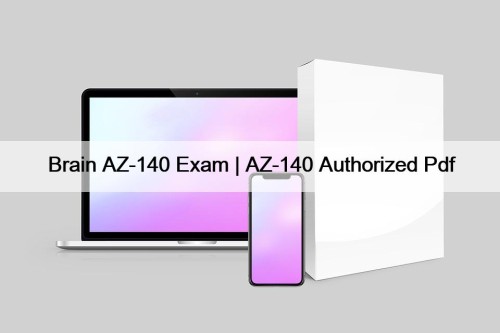Most Popular
 Quiz 2025 Google Unparalleled Google-Ads-Video: Google Ads Video Professional Assessment Exam Valid Exam Answers
Quiz 2025 Google Unparalleled Google-Ads-Video: Google Ads Video Professional Assessment Exam Valid Exam Answers
For candidates who are going to buy Google-Ads-Video exam torrent ...
 300-415 New Study Guide & 300-415 Reliable Exam Question
300-415 New Study Guide & 300-415 Reliable Exam Question
DOWNLOAD the newest TorrentExam 300-415 PDF dumps from Cloud Storage ...
 Brain AZ-140 Exam | AZ-140 Authorized Pdf
Brain AZ-140 Exam | AZ-140 Authorized Pdf
P.S. Free & New AZ-140 dumps are available on Google ...



JN0-664 Latest Exam Tips - Latest Juniper Service Provider, Professional (JNCIP-SP) - JN0-664 New Study Notes

Each question presents the key information to the learners and each answer provides the detailed explanation and verification by the senior experts. The success of our JN0-664 study materials cannot be separated from their painstaking efforts. Our system will do an all-around statistics of the sales volume of our JN0-664 Study Materials at home and abroad and our clients’ positive feedback rate of our JN0-664 study materials. Our system will deal with the clients’ online consultation and refund issues promptly and efficiently. So our system is great.
The JN0-664 exam covers a wide range of topics including but not limited to, OSPF, ISIS, BGP, MPLS, LDP, L2VPN, L3VPN, RSVP, BFD, VRRP, and many more. It is a comprehensive exam that tests your understanding of the underlying technologies, as well as your ability to apply that knowledge in real-world scenarios. JN0-664 exam consists of multiple-choice questions, and you will have four hours to complete it.
The JN0-664 exam tests the candidate's skills in configuring and troubleshooting Juniper Networks' service provider routing and switching platforms. JN0-664 Exam covers a wide range of topics, including advanced routing protocols, multicast, and VPNs. Candidates will be tested on their ability to configure and troubleshoot Juniper Networks' routers and switches, as well as their knowledge of protocols such as OSPF, BGP, and IS-IS.
>> JN0-664 Latest Exam Tips <<
Juniper JN0-664 New Study Notes, Latest JN0-664 Material
When we are in some kind of learning web site, often feel dazzling, because web page design is not reasonable, put too much information all rush, it will appear desultorily. Absorbing the lessons of the JN0-664 test prep, will be all kinds of qualification examination classify layout, at the same time on the front page of the JN0-664 test materials have clear test module classification, so clear page design greatly convenient for the users, can let users in a very short period of time to find what they want to study, and then targeted to study.
Juniper JN0-664 (Service Provider, Professional (JNCIP-SP)) Exam is a certification exam designed for networking professionals who want to validate their skills in designing, implementing, and troubleshooting Juniper Networks service provider networks. JN0-664 Exam is intended for individuals who have a strong foundation in networking technologies and protocols and have experience working with Juniper Networks devices and software.
Juniper Service Provider, Professional (JNCIP-SP) Sample Questions (Q40-Q45):
NEW QUESTION # 40
Which two statements are correct about IS-IS interfaces? (Choose two.)
- A. If a point-to-point interface is in both L1 and L2, separate hello messages are sent for each level.
- B. If a broadcast interface is in both L1 and L2, one combined hello message is sent for both levels.
- C. If a point-to-point interface is in both 11 and L2, one combined hello message is sent for both levels.
- D. If a broadcast interface is in both L1 and L2, separate hello messages are sent for each level.
Answer: A,D
NEW QUESTION # 41
Exhibit.
Referring to the exhibit; the 10.0.0.0/24 EBGP route is received on R5; however, the route is being hidden.
What are two solutions that will solve this problem? (Choose two.)
- A. On R4, create a policy to change the BGP next hop to itself and apply it to IBGP as an export policy.
- B. On R4, add the internal IBGP interface prefixes to the BGP routing tables.
- C. On R4, create a policy to change the BGP next hop to 172.16.1.1 and apply it to IBGP as an export policy.
- D. On R4, add the external EBGP interface's prefix to the IGP routing tables.
Answer: A,D
NEW QUESTION # 42 
Click the Exhibit button.
Referring to the exhibit, which two statements are true? (Choose two.)
- A. This route is learned from the same AS number.
- B. The multihop configuration is used for load balancing.
- C. This route is learned from two different AS numbers.
- D. The multipath configuration is used for load balancing.
Answer: A,D
Explanation:
In the exhibit, the output of the `show route protocol bgp` command is shown for the prefix `172.16.20.4/30`.
Let's analyze the provided BGP routing table to determine which statements are correct.
1. **AS Path Analysis**:
- The AS path for the route `172.16.20.4/30` is shown as `2 I`.
- This indicates that the route was learned from AS 2 and it is an internal (iBGP) route within the same AS.
2. **Multiple Paths**:
- The route has two next-hop IP addresses: `10.0.18.2` via interface `ge-1/0/4.0` and `10.0.19.2` via interface
`ge-1/0/5.0`.
- This indicates that BGP multipath is configured, which allows multiple equal-cost paths to be used for load balancing.
- BGP multipath must be explicitly configured to use multiple paths for the same prefix.
3. **Multihop vs. Multipath**:
- **Multihop Configuration**: This is typically used for establishing BGP sessions with peers that are not directly connected. It is not related to load balancing.
- **Multipath Configuration**: This is used to enable load balancing across multiple paths for the same prefix, which is the case here.
**Conclusion**:
Given the above analysis:
- **C. This route is learned from the same AS number**: Correct. The AS path `2 I` indicates the route was learned from the same AS number (AS 2).
- **D. The multipath configuration is used for load balancing**: Correct. The presence of multiple next-hops indicates that BGP multipath is configured for load balancing.
Thus, the correct answers are:
**C. This route is learned from the same AS number.**
**D. The multipath configuration is used for load balancing.**
**References**:
- Junos OS BGP Multipath Documentation: [Junos OS BGP Multipath](https://www.juniper.net
/documentation/en_US/junos/topics/topic-map/bgp-multipath.html)
- Junos OS BGP Configuration Guide: [Junos OS BGP Configuration](https://www.juniper.net/documentation
/en_US/junos/topics/concept/bgp-routing-overview.html)
NEW QUESTION # 43
Exhibit.

Referring to the exhibit, what must be changed to establish a Level 1 adjacency between routers R1 and R2?
- A. Change the level l disable parameter under the R1 protocols isis interface lo0.0 hierarchy to the level 2 disable parameter.
- B. Change the level 1 disable parameter under the R2 protocols isis interface ge-l/2/3.0 hierarchy to the level 2 disable parameter.
- C. Remove the level 1 disable parameter under the R2 protocols isis interface lo0.0 configuration hierarchy.
- D. Add IP addresses to the interface ge-1/2/3 unit 0 family iso hierarchy on both R1 and R2.
Answer: B
NEW QUESTION # 44
Exhibit
Referring to the exhibit, which statement is correct?
- A. The route-distinguisher configuration will allow overlapping routes to be shared between CE-1 and CE-
2. - B. The route-diatinguisher configuration will stop routes from being shared between CE-1 and CE-2.
- C. The vrf-target configuration will stop routes from being shared between CE-1 and CE-2.
- D. The vrf-target configuration will allow routes to be shared between CE-1 and CE-2.
Answer: D
Explanation:
In the exhibit, we see two VRF (Virtual Routing and Forwarding) instances, CE-1 and CE-2, configured on a Juniper router. Each VRF is associated with a route-distinguisher (RD) and a vrf-target value.
Understanding the Role of vrf-target
* The vrf-target is used to define Route Targets (RT), which control the import and export of VPN routes in MPLS Layer 3 VPNs (L3VPNs).
* If two VRFs share the same RT, they will import each other's routes, allowing communication between them.
* In this case, both VRFs have the same vrf-target:
vrf-target target:65512:100;
* Since both CE-1 and CE-2 have the same RT (65512:100), they will import and export each other's routes, enabling route sharing between them.
Understanding route-distinguisher (RD)
* The RD (Route Distinguisher) only ensures uniqueness of overlapping IP prefixes within the MPLS network.
* It does not control route sharing between VRFs.
* In the exhibit, both VRFs have the same RD (65512:1), but this does not influence whether they share routes.
Correct Answer Selection
* A (Correct): The vrf-target configuration enables route sharing between CE-1 and CE-2 since they have the same RT (65512:100).
* B (Incorrect): The vrf-target does the opposite-it allows sharing, not blocking.
* C (Incorrect): The route-distinguisher only provides unique route identification, but does not affect route sharing.
* D (Incorrect): Again, route-distinguisher has no impact on route sharing.
Reference from Juniper Official Documentation
# Juniper Documentation - Junos MPLS VPNs Configuration Guide:
"Route targets (vrf-target) are used to control the import and export of VPN routes between different VRFs.
VRFs with the same route target can import and export routes to each other, enabling inter-VRF communication." Thus, the correct answer is:
# A. The vrf-target configuration will allow routes to be shared between CE-1 and CE-2.
NEW QUESTION # 45
......
JN0-664 New Study Notes: https://www.passleadervce.com/JNCIP-SP/reliable-JN0-664-exam-learning-guide.html
- JN0-664 Braindump Pdf 🤛 JN0-664 Actual Exams 🚚 Certification JN0-664 Training 😧 Search for ⇛ JN0-664 ⇚ and easily obtain a free download on ➠ www.examsreviews.com 🠰 🎡JN0-664 Actual Exams
- JN0-664 Quiz Studying Materials: Service Provider, Professional (JNCIP-SP) - JN0-664 Test Torrent - JN0-664 Test Bootcamp 🥅 Immediately open ⏩ www.pdfvce.com ⏪ and search for ✔ JN0-664 ️✔️ to obtain a free download 😀JN0-664 Braindump Pdf
- Practice JN0-664 Questions 🚜 Test JN0-664 Engine Version 👍 Certification JN0-664 Training ✅ Easily obtain free download of 「 JN0-664 」 by searching on 《 www.examcollectionpass.com 》 🌛JN0-664 Reliable Test Forum
- Practice JN0-664 Questions 🧰 JN0-664 Exam Objectives Pdf 🚮 JN0-664 Valid Test Duration 😻 Download ⏩ JN0-664 ⏪ for free by simply entering ✔ www.pdfvce.com ️✔️ website 😈JN0-664 Certification Exam Dumps
- The Best JN0-664 Latest Exam Tips | Amazing Pass Rate For JN0-664: Service Provider, Professional (JNCIP-SP) | Trustable JN0-664 New Study Notes 🚋 Search for { JN0-664 } on [ www.examsreviews.com ] immediately to obtain a free download 🚞JN0-664 Certification Exam Dumps
- Pass Guaranteed Quiz Juniper - JN0-664 - Authoritative Service Provider, Professional (JNCIP-SP) Latest Exam Tips 🦯 Copy URL “ www.pdfvce.com ” open and search for ➤ JN0-664 ⮘ to download for free 👴JN0-664 Certification Exam Dumps
- Real Juniper JN0-664 Questions Download JN0-664 Exam Demo Free 😿 Copy URL ➠ www.pass4test.com 🠰 open and search for ☀ JN0-664 ️☀️ to download for free 😧JN0-664 Latest Test Labs
- JN0-664 Passguide 🟩 Associate JN0-664 Level Exam 🙆 Practice JN0-664 Questions 🐱 Open website [ www.pdfvce.com ] and search for ➥ JN0-664 🡄 for free download 🚨Test JN0-664 Practice
- JN0-664 Practice Test Training Materials - JN0-664 Test Prep - www.pdfdumps.com 🐍 Enter ▷ www.pdfdumps.com ◁ and search for ✔ JN0-664 ️✔️ to download for free 💋New JN0-664 Exam Fee
- New JN0-664 Test Format 🆑 New JN0-664 Exam Fee 🥌 JN0-664 Exam Braindumps 👘 Easily obtain free download of ➠ JN0-664 🠰 by searching on 「 www.pdfvce.com 」 🕰JN0-664 Exam Objectives Pdf
- 2025 JN0-664 Latest Exam Tips - Realistic Service Provider, Professional (JNCIP-SP) New Study Notes Free PDF Quiz 👽 Search for ▷ JN0-664 ◁ and easily obtain a free download on [ www.prep4pass.com ] 🏣New JN0-664 Test Format
- JN0-664 Exam Questions
- stepuptolearning.com visionglobe.net financialtipsacademy.in academy.novatic.se thesanctum.co.za www.adombizdigital.com farmasidemy.com aksafetytrainings.in cursos.confrariadotiro.com.br ecombyjeed.com
Tags: JN0-664 Latest Exam Tips, JN0-664 New Study Notes, Latest JN0-664 Material, New JN0-664 Test Guide, Reliable JN0-664 Study Guide